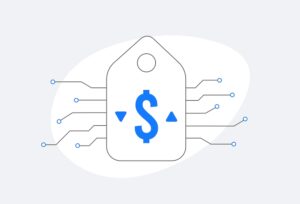 There’s a lot of talk about “moments” these days. Twitter recently introduced moments in their platform, Google micro-moments have been getting coverage and The New York Times announced a moments ad product this summer. And while each represent different incarnations of a growing trend, they have a common objective: providing more meaningful experiences amidst the deluge of digital, and specifically mobile, experiences.
There’s a lot of talk about “moments” these days. Twitter recently introduced moments in their platform, Google micro-moments have been getting coverage and The New York Times announced a moments ad product this summer. And while each represent different incarnations of a growing trend, they have a common objective: providing more meaningful experiences amidst the deluge of digital, and specifically mobile, experiences.
It’s that—the opportunity for better engagement—that fuels advertiser interest in mobile moments. The ability to cut through the chaos to connect with audiences at what is truly the right time translates to more efficient mobile campaigns and, overall, builds a stronger and more positive bond with audiences. But, in order to fully seize the mobile moment opportunity, it’s helpful to understand what moments can (and can’t) do.
Mobile moments help you better understand mobile audiences.
Unlike desktop, the mobile experience isn’t easy to characterize. We keep our devices close by at all times and use them for a seemingly infinite range of tasks, from finding directions to managing finances to diagnosing illnesses, playing games, falling in love and so on. This incredible range means that not all moments are created equally; some mobile sessions are brief and purposeful, others are long and aimless and many fall somewhere in between. Without knowing where a user’s current mobile experience lands on the moment spectrum, advertisers are barging into a dark room with a very loud megaphone. At best, it’s awkward.
Mobile moments deliver more efficient campaigns.
Even before ad blocking reached peak buzz, advertisers knew that the ROI of mobile advertising wasn’t where it could be. That belief limited mobile investment and, as more digital activity migrates to devices, weakened brand connections with consumers. Mobile moments represent an opportunity for improvement in ad performance. By following the cues that users give us through billions of mobile data points, we can better determine whether or not a user would be receptive to an ad at a given time. That insight on ad receptivity translates to a more cost-effective mobile ad investment (who doesn’t want to reduce their investment in poorly-timed impressions?) and, importantly, a more positive experience for the mobile user.
Mobile moments help you improve the user experience.
It’s important to note that ad receptivity isn’t binary; there are grey areas where a mobile user may be open to advertising in general, but perhaps less open to an in-depth rich ad or 30-second video ad. Mobile moments make it possible to identify not only when an ad will be best received, but what format is most likely to deliver optimal performance. For example, is the user at home on a Sunday morning, relaxing with long-form content after a late night out? Then maybe it’s a good time to deliver the immersive creative. Or are they at the grocery store, looking up ingredients for sausage cornbread stuffing? A simple display banner will probably do the trick.
Mobile moments offer a significant learning opportunity.
There is a ton of intelligence that can be gained in looking at your campaign through a ‘moments’ lens, versus relying on the standard (and far less specific) gender, age, and income analysis. A moments analysis, be it mid- or post-campaign, provides insight that correlates with the more granular experiences of mobile users and allows advertisers to optimize against those sweet spots or, in this case “sweet moments”. And this leads to the next point:
Mobile moments aren’t just about instant gratification.
Mobile moment targeting can provide short-term gains, with advertisers seeing a 50% (and higher) increase in engagement in mobile moment targeted campaigns. But the short-term impact is eclipsed by the long-term value that comes with a deeper understanding of mobile audiences and their mindset. That understanding gives us the power to deliver more meaningful experiences to mobile consumers and even correct some of the fallout the industry created by barging into that dark room with the very loud megaphone. After all, despite many advancements in technology and consumer behavior the old adage, “know thy customer,” remains true. Mobile moments offer a new framework to do just that at a time when the industry really needs it.
Alvaro Bravo is president and co-founder of Aki Technologies.


 Network
Network

